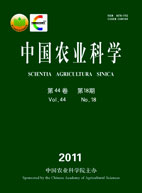-
Antigenic Expression and Distribution of Chitosan/pcDNA-DPV-gC Gene in the Vaccinated Ducklings
- SHEN Fu-Xiao, JIANG Jin-Feng, CHENG An-Chun, WANG Ming-Shu, LU Li-Ting, JIA Ren-Yong, ZHU De-Kang, CHEN Xiao-Yue, SUN Tao
-
Scientia Agricultura Sinica. 2011, 44(18):
3909-3917.
doi:10.3864/j.issn.0578-1752.2011.18.023
-
 Abstract
(
764 )
Abstract
(
764 )
 PDF (630KB)
(
863
)
PDF (630KB)
(
863
)
 Save
Save
-
References |
Related Articles |
Metrics
【Objective】 DNA-chitosan nanoparticles carrying duck plague virus (DPV) gC gene were constructed by using complex coacervation process to investigate its antigenic expression and distribution in the vaccinated ducklings. 【Method】 The 20-day-old DPV-free ducklings were respectively immunized with chitosan/pcDNA-DPV-gC gene vaccine via intramuscular injection, nasal administration and oral administration. At intervals of 4 h, 12 h, 1 d, 3 d, 5 d, 7 d, 2 w, 4 w, 6 w and 10 w post-vaccination (p.v.), two ducklings were randomly euthanatized and their organs (liver, spleen, lung, kidney, pancreas, brain, thymus, Harderian gland, bursa of Fabricius, esophagus, duodenum, caecum, and rectum) were collected. Meanwhile, an indirect immunohistochemical staining (IHC) was developed to detect antigenic expression and distribution of DPV gC antigens in the vaccinated ducklings. 【Result】 The DPV gC proteins were found in the liver, bursa of Fabricius, duodenum, caecum and rectum in the intramuscular injection group at 1 d post-vaccination (p.v.); Moreover, the immunogenicity were firstly found in the lung at 12 h p.v., and the DPV gC proteins were observed in the bursa of Fabricius and Harderian gland in the nasal administration group at 1 d p.v. Furthermore, the positive signals were firstly found in the esophagus at 12 h p.v., and the DPV gC proteins were observed in the bursa of Fabricius, duodenum, caecum and rectum in the oral administration group at 1 d p.v.. The DPV gC proteins were distributed in the liver, lung, bursa of Fabricius, Harderian gland, esophagus, duodenum, caecum and rectum, which were served as the principal sites for DPV gC antigens localization. The positive immunogenicity was mainly distributed in the parenchymal hepatic cells, epithelial cells of lung, lymphocytes of Harderian gland and bursa of Fabricius, epithelial cells of esophagus, epithelial cells and lamina propria mucosae cells of intestinal tract. According to the immunogenicity intensity and duration time via different immunization routes, the positive staining in all tissues was in the order of intramuscular injection group>nasal administration group>oral administration group. 【Conclusion】 The results demonstrated that chitosan as a polycationic gene carrier could promote the expression efficiency of DPV gC antigens in the vaccinated ducklings. Intramuscular injection was considered to be the best immunization routes to inoculated chitosan/pcDNA- DPV-gC gene vaccine.









